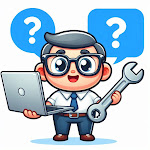In the realm of home automation, IoT has created smart homes that make living more comfortable, secure, and energy-efficient. Smart thermostats, for instance, allow homeowners to remotely control temperature settings based on occupancy, weather conditions, and user preferences. Similarly, IoT-enabled lighting and security systems take home automation to new heights, programmatically adjusting based on time, occupancy, and user-defined rules.
The IoT's impact on the transportation sector is significant as well. Internet-connected vehicles are now equipped with advanced sensors, communication systems, and analytic tools that not only improve navigation and safety but also enable predictive maintenance, fuel efficiency, and remote diagnostics. In the coming years, autonomous vehicles and intelligent traffic systems will further transform urban mobility and help address traffic congestion, fuel consumption, and air pollution concerns.
Moreover, the Industrial Internet of Things (IIoT) is fueling innovation and furthering the Fourth Industrial Revolution (Industry 4.0). The seamless integration of IoT devices collect massive amounts of data, streamlining processes, and optimizing production. By monitoring equipment, improving predictive maintenance, and enhancing supply chain management, the IIoT drives substantial cost savings, boosts productivity, and increases overall profitability for businesses.
Of course, embracing IoT comes with its share of challenges, particularly in the areas of privacy and security. As the number of connected devices increases so do the risks of data breaches, unauthorized access, and cyberattacks. To ensure the safety of both personal and industrial IoT ecosystems, robust security measures, continuous monitoring, and responsible data management practices must be implemented.
What is the Internet of Things (IoT)?
The Internet of Things (IoT) refers to a network of physical devices, vehicles, home appliances, and other items embedded with sensors, software, and connectivity to enable them to connect and exchange data with other devices and systems. IoT allows these devices to communicate and interact with each other over the internet, enabling new levels of automation, efficiency, and convenience.
How Does IoT Work?
IoT devices are connected to the internet and communicate with each other using a range of wireless protocols, such as Wi-Fi, Bluetooth, Zigbee, and cellular networks. The data collected from these devices is sent to the cloud, where it is analyzed and used to make informed decisions and improve processes.
The Impact of IoT on Industries
The impact of IoT on various industries is enormous, and it is transforming the way businesses operate.
Healthcare
IoT is playing a crucial role in healthcare by enabling remote patient monitoring, telemedicine, and health tracking devices. IoT devices such as wearable health monitors, connected medical equipment, and remote patient monitoring systems help doctors and patients to monitor health conditions remotely and make informed decisions.
Agriculture
IoT is also revolutionizing the agriculture industry by enabling precision farming, soil monitoring, crop monitoring, and livestock tracking. IoT sensors and devices are used to collect data on soil moisture, temperature, and nutrients, which help farmers to optimize crop yields and reduce waste.
Manufacturing
IoT is helping to streamline manufacturing processes by enabling real-time monitoring of machines and equipment. IoT sensors and devices can detect and diagnose faults, track inventory, and optimize production schedules, leading to reduced downtime, increased efficiency, and improved product quality.
Transportation
IoT is transforming the transportation industry by enabling connected vehicles, traffic monitoring, and logistics optimization. IoT sensors and devices can collect data on traffic flow, vehicle performance, and fuel consumption, which help to optimize routes, reduce fuel costs, and improve safety.
Retail
IoT is enhancing the retail industry by enabling personalized customer experiences, inventory optimization, and supply chain management. IoT sensors and devices can collect data on customer behavior, store traffic, and inventory levels, which help retailers to personalize marketing, optimize inventory, and streamline supply chain processes.
Benefits of IoT
The benefits of IoT are numerous, and they are driving the adoption of this technology across industries. Some of the main benefits of IoT are:
- Increased efficiency and productivity
- Cost savings
- Improved customer experiences
- Enhanced safety and security
- Better decision-making
- Real-time monitoring and control
- Challenges of IoT
Despite its benefits, IoT also poses several challenges. Some of the main challenges of IoT are:
- Security risks
- Data privacy concerns
- Interoperability issues
- Complex infrastructure requirements
- Limited standardization
In conclusion, the Internet of Things is at the forefront of shaping our future by forging innovative connections between physical objects and the digital realm. As IoT continues to advance, it has the potential to dramatically transform industries, drive efficiencies, and improve our quality of life. However, with these opportunities comes the responsibility to build secure and reliable IoT ecosystems that protect user privacy and ensure the sustainable growth of this transformative technology.

